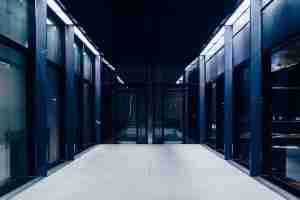What does a server farm look like?

A server farm is a large and complex system that is used to store, manage, and process data. They are usually used by large companies or organizations that have a lot of data to store and need a reliable way to access it. Server farms can be very expensive to set up and maintain, but they offer many benefits for those who have the resources to use them. In this blog post, we will take a closer look at what server farms are and what they can do for your business!
In’s and Out’s of Server farms
Server farms are made up of multiple servers that store data in different ways. The most common type is called “clustering.” These types of servers store data together on multiple hard drives so that it can be accessed quickly and easily. This is important for businesses that need to access their data quickly in order to make decisions or take action.
Another type of server farm is called a “grid.” Grid servers are used when you need to process a lot of information at once. They store data across multiple machines so that each machine can handle its own workload without affecting other parts of the network.
1. A server farm is a large warehouse with racks of servers
2. Server farms are typically used by companies to store data for their customers
3. Google and Facebook both have server farms, but they’re not open to the public
4. Sometimes people refer to their computer as a “server” which is just one device that stores information for other devices on the internet
5. Server farms can be big or small – some might only hold 100 servers while others could hold 10,000+ servers
6. The first server farm was built in 1961 and it was made up of vacuum tubes and transistors.
7. They can be found in many locations, including the basement of a building, an industrial park, and even underwater
8. Server farms are often filled with rows upon rows of server racks which contain computer servers
9. The size of the server farm determines how big it is – smaller ones may only have one or two racks while larger ones can have hundreds.




